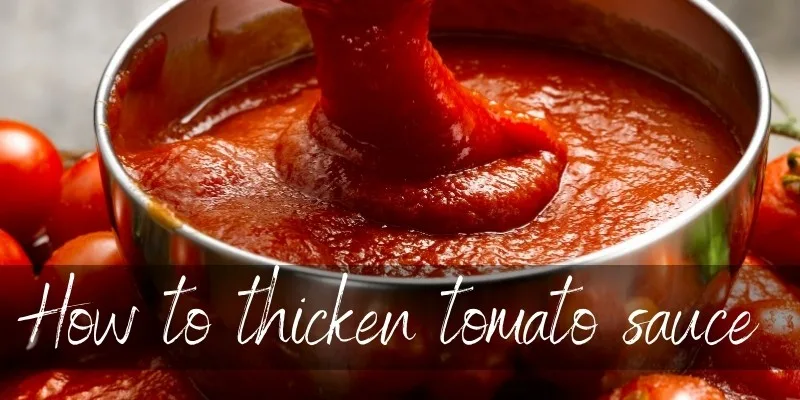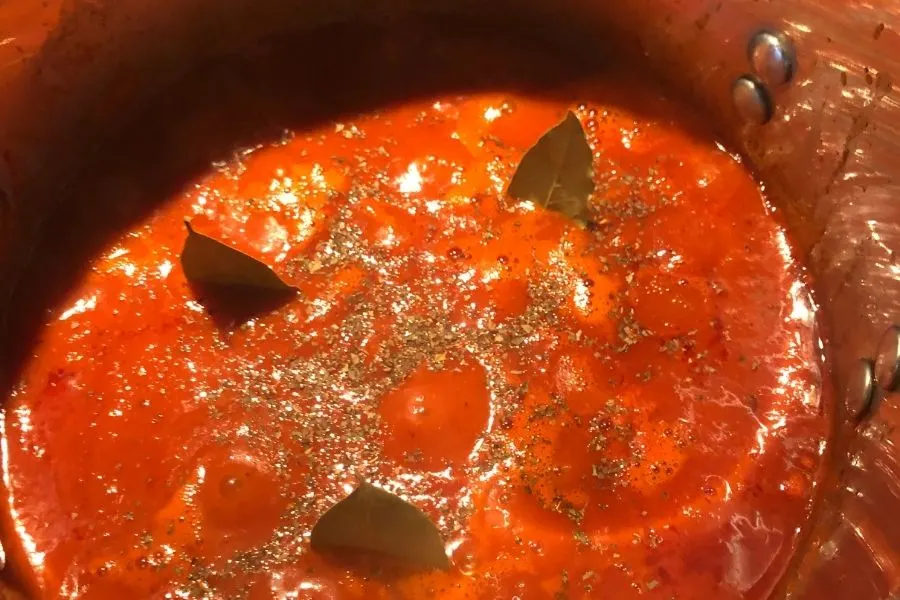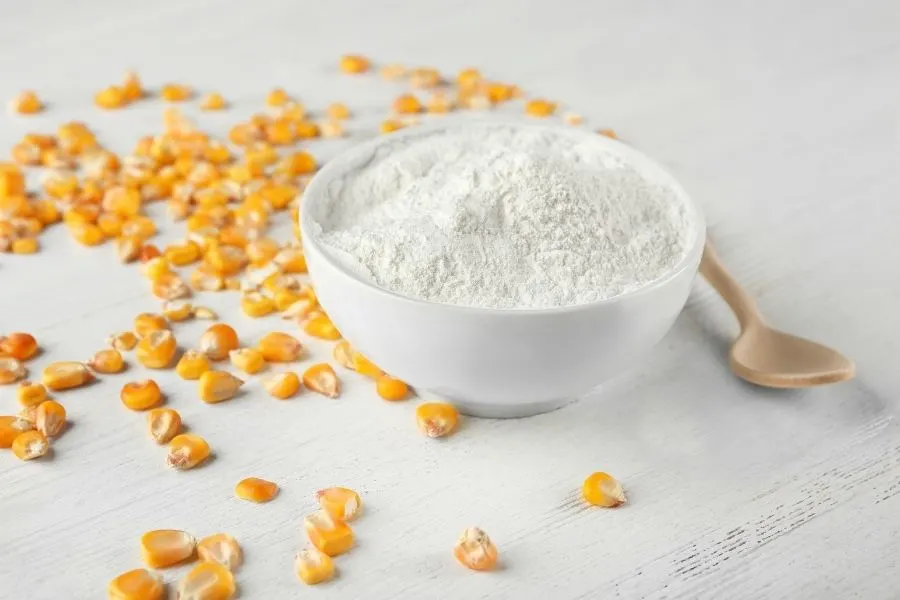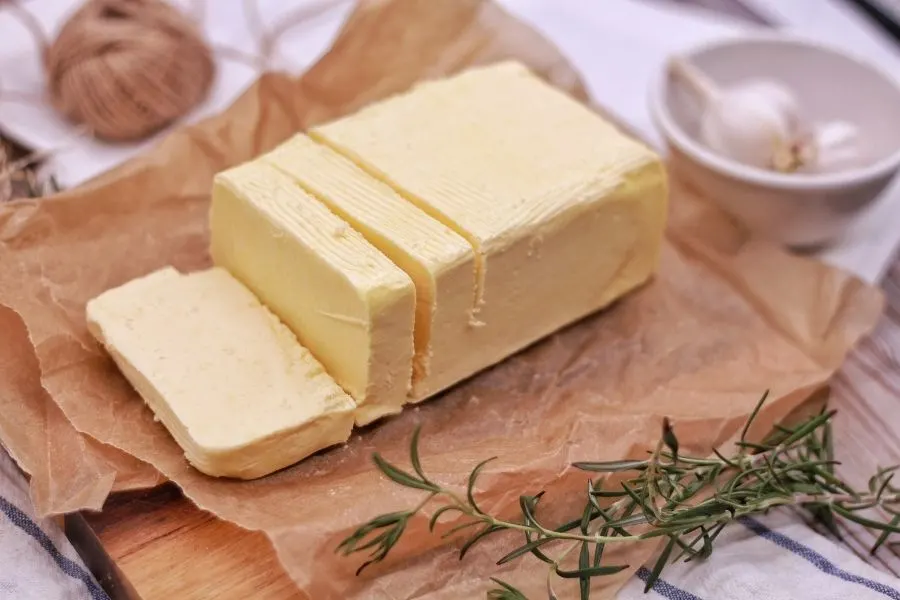Thick and delicious tomato sauce is an integral ingredient of some of the most amazing dishes. And going for fresh, homemade tomato sauce makes everything all the way more awesome. It forms the base of some super comfort meals, ranging from soups, pastas, decadent pizzas, and more.
However, perfect tomato sauce is all about the right texture, consistency, and thickness. If you are wondering how to get the desired thickness for your homemade tomato sauce, take a look at the below methods.

How To Thicken Tomato Sauce?
Tomato sauce can be thickened in a few ways. The best and most delicious is by simmering it for several hours, so water will evaporate.
Other ways are to add various thickeners to your tomato sauce, like starches, a roux, some mashed vegetables (could be potatoes), or even butter.
Thickening tomato sauce or reducing is all about simmering and cooking the water content away, achieving a thick paste that’s perfect for various recipes. Simmering in other words, is to get a soft boil that’s perfect for a smaller tomato sauce pan.
Tomato sauce needs you to go for a constant stirring as it seems to explode with big, hot drops. Not stirring tomato sauce thoroughly at this stage may lead to burning of the same.
Keep in mind that thickening tomato sauce by simmering can take actual hours. A few other ways of thickening the sauce can work wonders when combined with the process of simmering.
While you can add tomato paste to your homemade sauce to achieve the right thickness and flavor, adding some starchy ingredients and fillers can also help in reducing the water content of the sauce.
Now let’s take a look at each of these methods, maybe you’ll find the one that works best for your situation.
Read Also:White VS Red Sauce
Thicken tomato sauce by reducing liquid
To reduce the water content, you have to simmer tomato sauce for a few hours. How long you simmer it for depends on you, how long you’ve got, and how thick you’d like the sauce to be.
Important note: any tomato sauce you ever make needs to be simmered for at least an hour, to let the flavors mix. It also lowers acidity, and it will definitely end up tasting better.

To reduce the water content of tomatoes, you can do one more thing. Slice the tomatoes a few hours before cooking, further popping the slices in a strainer with a bowl underneath to collect the liquid content.
This results in a thicker sauce when you actually cook it, but may take away from the final flavor.
When you simmer the sauce, do it long enough to allow it to thicken properly. It may even take a whole day to achieve the right thickness depending on the cooking temperature.
Try cooking tomato sauce in the oven
You can also pour tomato sauce in a casserole dish, and thicken it in the oven on very low heat. This makes sure you don’t need to stir continuously while also not worrying about getting the sauce burnt.
It may sputter, so you may have some cleanup to do. However, if you have a great way of cleaning your oven, then this method may work better.
You can let the sauce thicken for hours on end in the oven while you make other preparations. This might be the best method, if you’re having a big event.
Try simmering in a wide, shallow pan
If you need to thicken the sauce fast, go for cooking it on the stove using a shallow frying pan, or a saute pan. The larger the surface area, the quicker the cooking process.
However, cooking it on a simmer calls it for keeping a close check on the pan to prevent the sauce from burning.
This only works if you’ve got a small amount of tomato sauce. Because of this, it might be best to cook tomato sauce (now and in the future) in big batches, and freeze it in small portions.
This way the next time you need tomato sauce you’ve already got a few batches that have been simmered for 12 hours.
Thicken tomato sauce with fillers
Depending on the kind of texture and flavor you are looking for, you can go for various add-ons to thicken the tomato sauce.
Keep in mind that this method is faster, but you will still have to simmer tomato sauce for an hour. It reduces acidity and yields a better sauce, overall.
You may also have to adjust for seasoning, as some of these fillers may change the flavor a little.
Tomato Paste
Adding tomato paste is the easiest way to thicken tomato sauce very quickly. Most tomato pastes out there are thick additives that will increase the amount of tomato solids of the sauce, without going for too much added liquid.
Cornstarch
The best part about cornstarch is that you don’t need to add too much of it. One teaspoon or a little more works best per cup of tomato sauce. Combine cornstarch with equal amounts of water before adding it to the sauce.
The idea is to create a slurry-like solution of cornstarch to make it just perfect for the sauce. While cornstarch solution can be added into the sauce even in the last few minutes, it also doesn’t alter the flavor of the same.
Add cornstarch solution little by little, stirring the sauce in between to check the thickness. Make sure not to add too much of it to avoid it from getting too thick, and neutralizing the flavor of all the other ingredients.

Breadcrumbs
The fact that breadcrumbs absorb a lot of moisture from tomato sauce works wonders in thickening the liquid. At the same time, they don’t bring out any difference to the flavor of the sauce, unless one goes for seasoned breadcrumbs.
However, one cup of sauce calls for about one-third cup of breadcrumbs.
The yeast in the bread mixture may bring a little sourness to your sauce, so be sure to adjust the seasoning.
Roux
Roux is usually a mixture of flour with butter or other edible fats. For tomato sauce, butter goes just right with flour, combined with a little milk or stock.
Adding roux to the sauce thickens it up miraculously well. It is recommended to slightly cook the mixture and stir it well before adding the same to tomato sauce.
Start with butter, further adding in the flour, and cooking the mix to make it apt for the sauce. For every cup of tomato sauce, you may need to add equal parts of butter and flour, specifically, 2 tablespoons of each.
Butter
To thicken the sauce with this add-on, you are going to need loads of butter. For every cup of tomato sauce, you need to add a cup of thoroughly whisked, silky smooth melted butter. Adding the same to tomato sauce yields a mix that’s just perfect for pizzas and pastas.
You can overdo this, and it will result in an overly greasy sauce. Be mindful of how much you use.

Cheese
You can add grated cheese or shredded cheese to tomato sauce to get it a perfect thick texture. Other great options include mozzarella cheese, romano, and parmesan – and you don’t need too much of cheese to get the task done.
To make sure that the cheese melts into the sauce, prefer adding it early into the mixture, but you can also add it at the end if forgotten earlier. Although cheese brings some change to the flavor, it holds the sauce together with chunks of veggies or meat.
Lemon Juice
Squeezing about half a lemon into tomato sauce is a great idea to thicken the mixture. The fact that tomatoes are rich in pectin makes the acid from the juice thicken the sauce.
However, make sure you don’t go for too much of lemon juice to avoid getting an unpleasant taste and overwhelming the sauce.
Read Also:Should You Add Sugar To Pizza Sauce ?
Mashed Vegetables
Some prefer adding some mashed potatoes into tomato sauce to bring out a thick texture. You can also go for minced onions, carrots, peppers, celery, or potatoes. If you don’t want to alter the texture or get an added crunch to the paste, you can always go for some caramelized onions.
Each of the previous methods works just right for thickening some homemade tomato sauce, and you can always go for one or more of the methods combined to get the task done.
It’s entirely a matter of your specific whims and tastes when it comes to selecting the add-ons and ways that yield the desired consistency that can give all the store-bought tomato sauces a run for their money.

